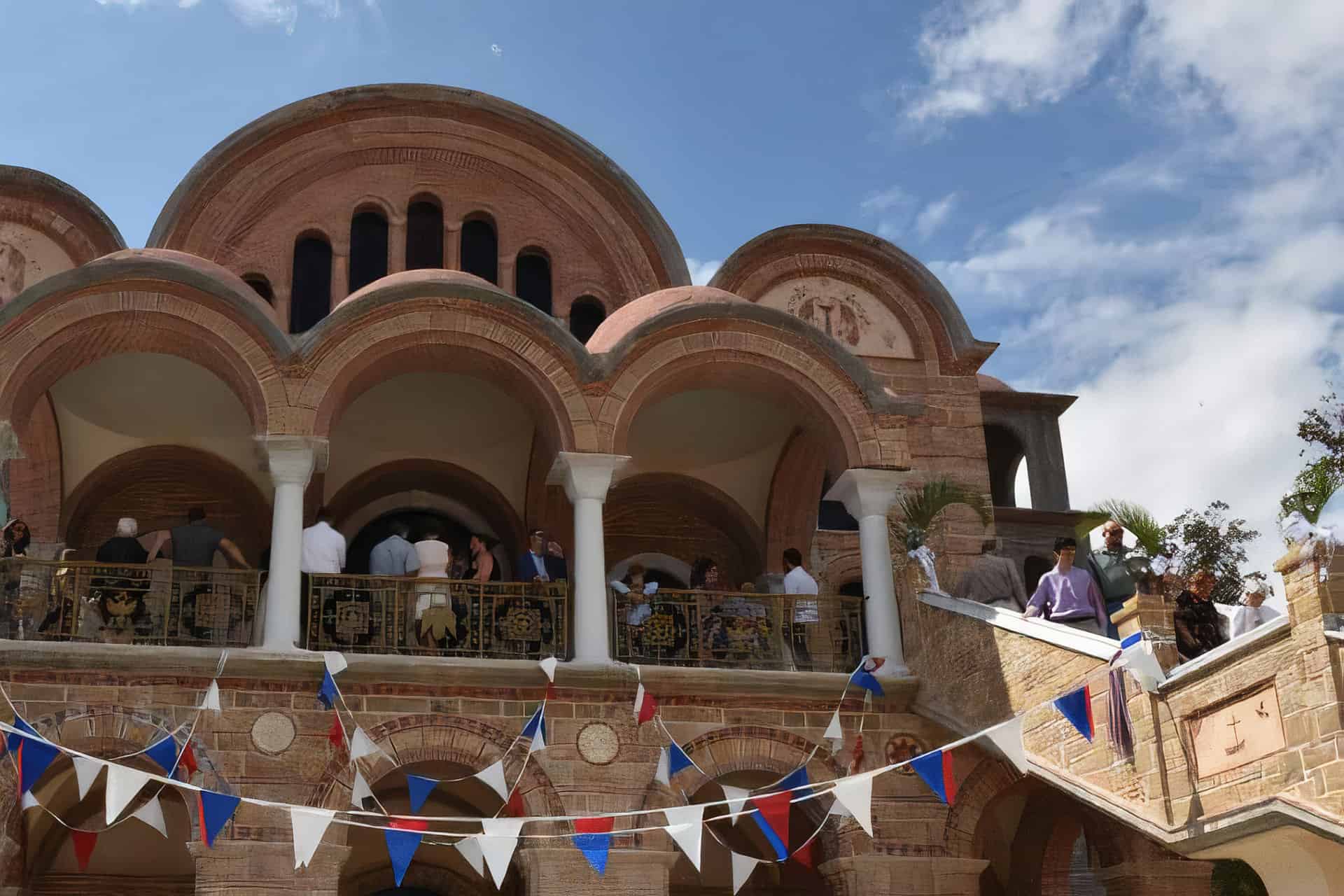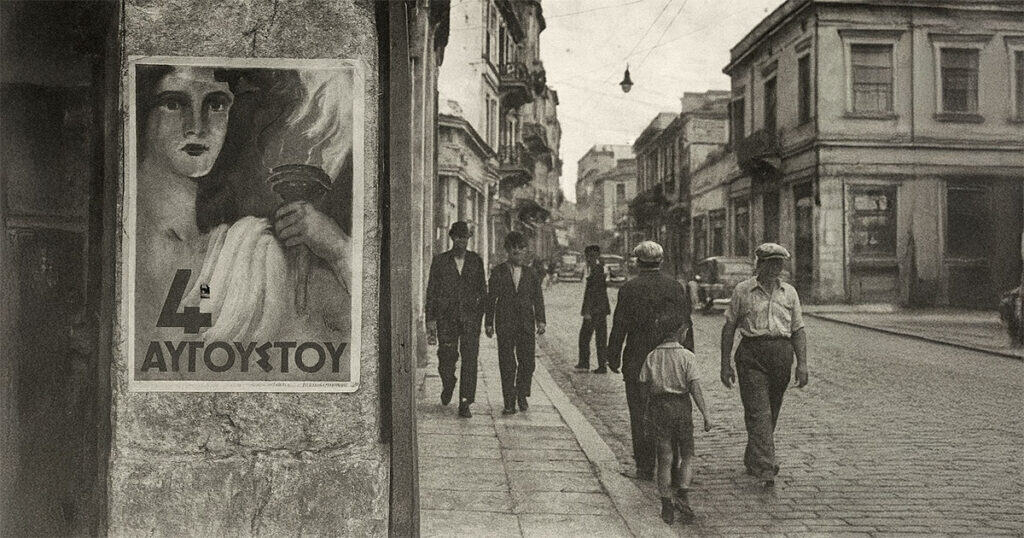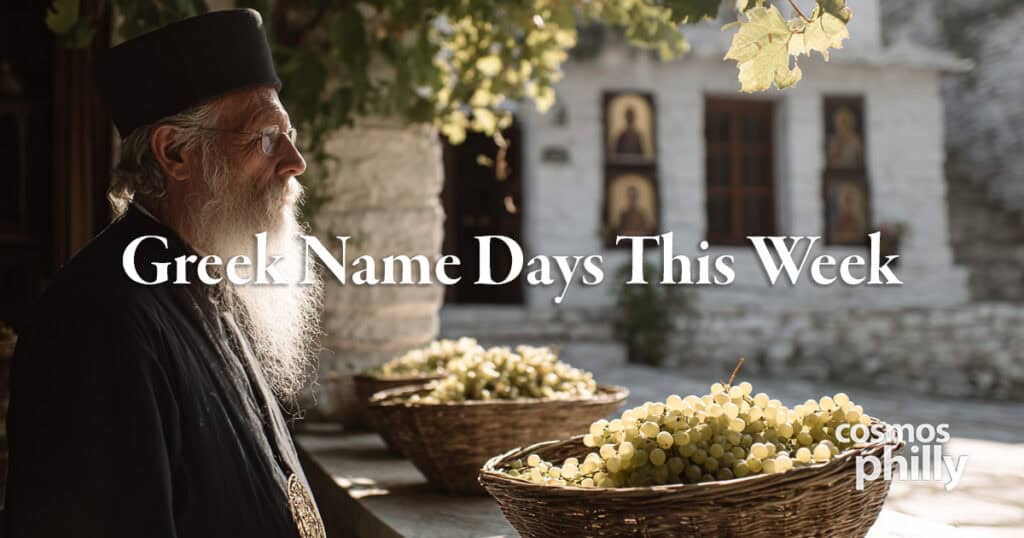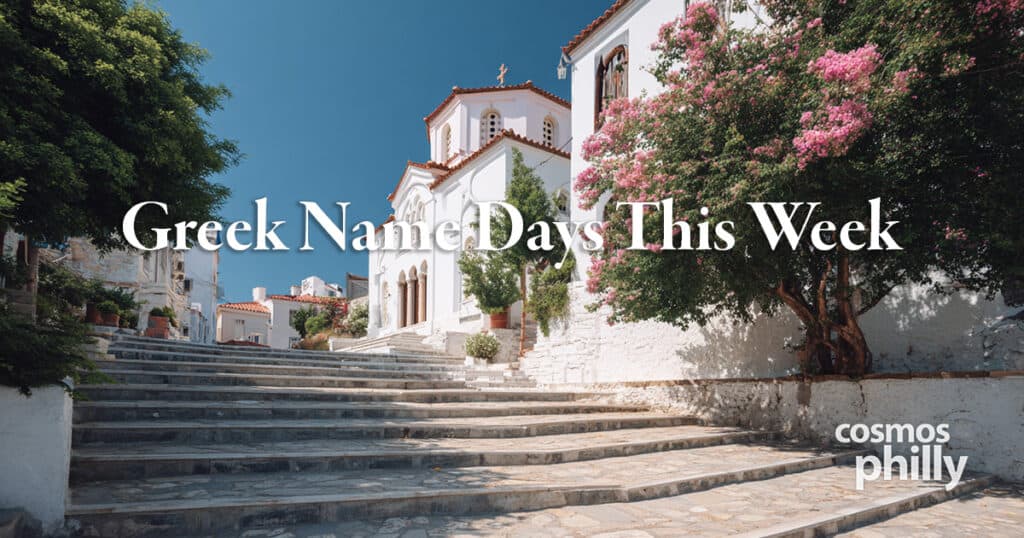In a clearing by a lake, a Byzantine metropolitan church straight from Mystra leaves you transfixed. This is in the Upstate Mountains of South Carolina, rather than the foothills of the Pindus, or Tayegetos, or the Rhodopes. What is going on?
At a second glance, somehow the setting works. Greece is a very mountainous country, and from time immemorial churches and monasteries have been built in the mountains, drawn, perhaps, by the spiritual solace of nature, but also by the all too real needs of protection from marauders. Even the red earth and abundance of pine trees in this region of South Carolina readily recall Greece.
To me, with perhaps a bit of poetic license and hyperbole, The Metropolis of Atlanta’s Diakonia Center is, if not Mystra, then it is a Mystra-in-process.
Allow me to explain. The mountain settings, in a pine filled land readily recalling so many mountain Greek venues, a small lake, a stream, and a series of buildings both a Hellenic stucco and tile, all remind you immediately of Greece. Even the wooden structures are somehow declaratively Byzantine, recalling any number of locations I visited when we lived in Serbia, whose vegetation and undulating mountains are a more colder climate version of Upstate South Carolina.

The site’s center of gravity, its omphalos, to borrow a Delphic term, is the church, which immediately reminded me of Mystra’s Pantanassa, with hints of some of the larger domed cathedrals of Greek Macedonia, particularly towns built by Asia Minor refugees, where a large cathedral is also a vessel of triumph over tragedy.
The church is clearly not of this continent. Though Orthodox Churches everywhere are usually heavy on the brick and mortar, here, the blueprints and the materials are straight out of Greece, and I mean that literally, as the church is still under construction and containers full of Greek-sourced marble and tiles adorn the edifice, which is still in the finishing stages.
I have been watching with pride and awe the progression of the church for the past three years, recalling when it was a concrete shell inside and outside. Today much of the exterior is finished, and the interior remains a semifinished concrete, recalling in my mind the first time I went to St. Sava’s Cathedral in Belgrade, the largest church in the Balkans, whose soaring dome recalls St. Sophia in its splendor and grandeur. Here too, far from the centers of Orthodox gravity, looking up at the dome, I feel a similar sense of majesty, and of a rootedness in a new world.
The Diakonia Center is a site with a natural elegance, either when the place is almost deserted, particularly in this social distanced era, or during a panegyri with food, drink, song, and dance. I cast my gaze in a 360 degree turn around the place, centered on a lovely mountain lake, and centered on a church. Regardless of faith, the harmony of the settings almost compels in the visitor an inner peace and a sense of pilgrimage.
The Diakonia is a place of peace and contemplation, but it is also a designed to create community, congregation, and creativity. Except for the COVID summer of 2020, every year the center hosts St. Stephens Summer camp for adolescents, where hiking, swimming, sports, and kayaking dovetail with spiritual and cultural instruction in our faith and heritage. The center is rustic, yet not primitive, with dozens of cabins and dormitories, a short of architectural halfway house between Appalachian and Balkan, cozy and comfortable.
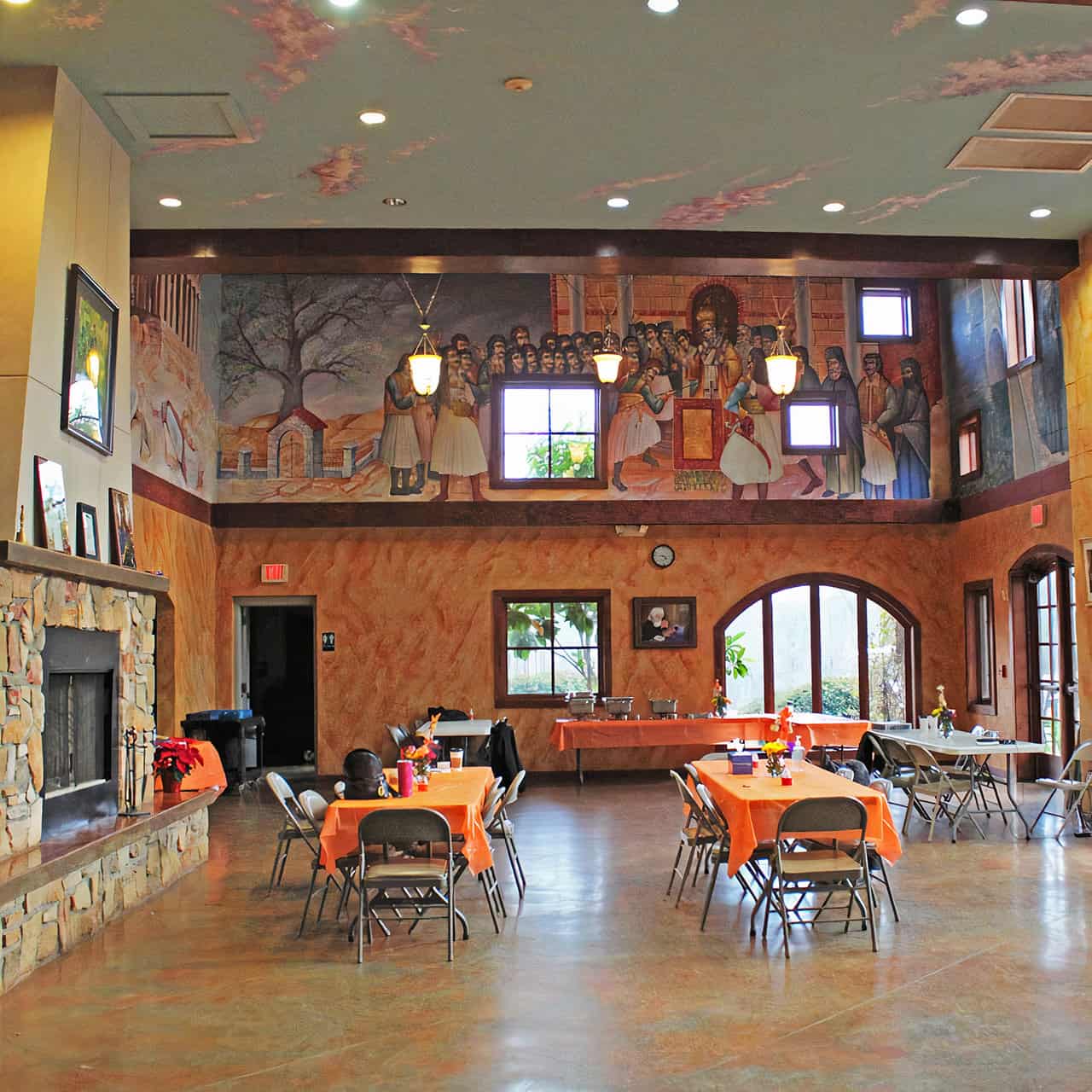
Even the dining hall, readily Greek in its tile roof, stucco, and pergola façade, contains interior frescoes of the continuation of the Hellenic spirt, from the Classical period, to Byzantium, to the grizzled heroes of 1821. All too often in this hall stories from those periods, and a contextualized vision of the Greek Orthodox faith and identity, are brought to audiences both young and more mature.
This sense of the Diakonia Center as an inspired “campus” of intellectual discourse also recalls Mystra. There, as the thousand-year Byzantine Empire breathed its last, incredible works of art and thought were being developed in studios, in lecture halls, or under the shade of plane trees. Just a slight flight of the imagination, and I can see it happening here.
